#source: guillermo del toro
Quote
Since childhood, I've been faithful to monsters. I have been saved and absolved by them, because monsters, I believe, are the patron saints of our blissful imperfection, and they allow and embody the possibility of failing.
Skull, answering the questions of why and how he survived and thrived as a spy for twenty years under Drakkon’s gleaming, greedy eyes.
#incorrect power rangers#boom! comics power rangers#world of the coinless#Red Sentry Coinless Spy Skull#eugene skull skullovitch#Shattered Grid#Lord Drakkon#mmpr#ggpr#Mighty Morphin Comics#go go power rangers comic#Ranger Slayer#source: guillermo del toro
19 notes
·
View notes
Text


x
#source: yoursghouly#crimson peak#mia wasikowska#guillermo del toro#horror movie#black and white#film#gothic#scary#goth aesthetic#spooky#gothic horror#horror gif#movies#gif#Halloween#goth#gifs#horror#my shitposts#black and white gifs#fear#candle#hallway#candelabra
295 notes
·
View notes
Text
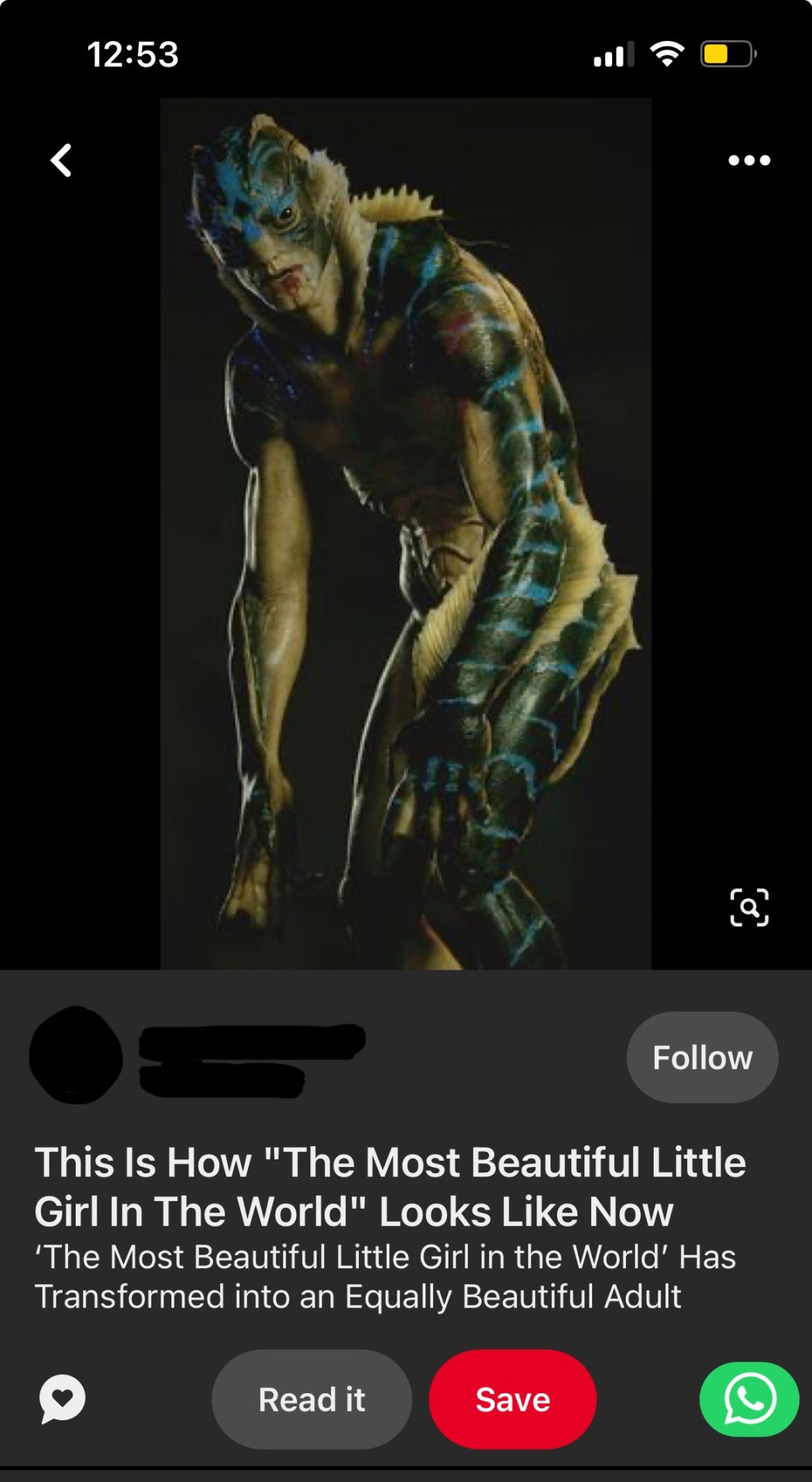
So true bestie
#shape of water#the shape of water#gdt#guillermo del toro#doug jones#pinterest#source: pinterest#shitpost#Fish#monster fucker#i am not a monster fucker but I think they’d get a kick out of this one#It’s like throwing food flakes in their tank for good behavior#glow up
11 notes
·
View notes
Text
Guillermo del toro: Jake Pentecost? No no no, mako was supposed to be the main character and the kaiju were supposed to be from the future
Me: Mako could’ve been the main character?!
Guillermo del toro: Newt wasn’t even supposed to even be the one controlled by the precursors, it was going to be an original character.
Me: MAKO COULDVE BEEN THE MAIN CHARACTER ????!!!!!!
Based on ideas that Guillermo del toro had for uprising before leaving bc he was busy working on shape of water
#pacific rim#pacific rim uprising#mako mori#newt geiszler#newton geiszler#guillermo del toro#incorrect pacfic rim quotes#pacific rim incorrect quotes#mini rant#source: ducktales#incorrect pacific rim quotes
19 notes
·
View notes
Text
I'm so pleased to see the amount of excitement that the idea of a Guillermo del Toro Frankenstein adaptation starring Oscar Isaac as the titular doctor and Andrew Garfield as the monster has generated. Truly. And I don't want to rain on anyone's parade.
But. Like. giantfreakinrobot is a site known for its clickbait, not its accuracy. Until you see places like Deadline, Variety, or similar outlets reporting on it, hold your enthusiasm.
Maybe this is one of the times that the clickbait sites got it right and we're in for some Good Times, but it is just as likely that they're wrong and I'd hate to see any of that disappointment translate to anger thrown at the director and actors themselves instead of the sites that lied for clicks.
#Tegan Talks#Media Literacy#Guillermo del Toro#Oscar Isaac#Andrew Garfield#Frankenstein#Always check the sources before committing to an idea
13 notes
·
View notes
Note
hiii! In regards to the "Guillermo del Toro Says “We Have to Rescue” Studio Animation From “Emoji-Style Behavior”" article/statement, do u have examples of animation that specifically is & is not this type of expression/animation? Bc it's rly hard for me to actually picture this and like I need examples ahaha
Disclaimer - I was not at this specific talk, so I don't have the full context and I know from reliable sources - friends of mine that DID attend it - that it's not all he said there, so that article is pretty much only relying spicy chosen bits. That being said, I will focus on this paragraph.
Getting more specific, he went on to detail what he despises about certain lazy proclivities in commercial animation, notably how characters and emotions are ��codified into a sort of teenage rom-com, almost emoji-style behavior.” He added, “[If] I see a character raising his fucking eyebrow, or crossing his arms, having a sassy pose — oh, I hate that shit. [Why] does everything act as if they’re in a sitcom? I think it is emotional pornography. All the families are happy and sassy and quick, everyone has a one-liner. Well, my dad was boring. I was boring. Everybody in my family was boring. We had no one-liners. We’re all fucked up. That’s what I want to see animated. I would love to see real life in animation. I actually think it’s urgent. think it’s urgent to see real life in animation.”
What he talks about here is something I find omnipresent in modern American animation, or from studios that are funded by and/or trying to sell to americans (ex: Illumination McGuff). Here del Toro specifically mentions characters and emotions and how they are codified, which would include how characters are written, how animated their emotions and body language are, how they interact... He also mentions studio animation, an important distinction - this does not include indie animators!
A few things, adding * to those he's specifically calling out here, and more of my own that are not stated but I feel match the style
*one liners
*the "dreamworks face"
*sassy attitude
*quick banter
*taking poses
looking into the camera
overtly smooth, cartoony body language
characters explaining their emotions, plot resolutions around this
I will now get to examples, starting by a comparison between two animated films. Both of these films are contemporary, family-audience, french animated films. They share similarities in setting, being medieval fantasy fairytales about female heroes. One of these films was made with an american audience in mind (Pil), and the other caters to a french audience (Dragon Princess). You can compare how the characters act in both trailers:
youtube
youtube
Try and only focus on dialog, body language and expressions, barring art style and story!
Feature films that, in my opinion, also fit that "emoji style behaviour" (* for those I have not fully watched) any why:
Turning Red: the sass, the one liners, body language, camera looking, quick banter, plot resolution with characters explaining their emotions. The whole film fits
Puss in Boots: The last wish: sass, one liners, body language, banter, characters explaining their emotions. Scenes like Puss meeting his past lives and the dog's dialog are strong offenders
The emperor's new groove: sass, one liners, posing, banter
Encanto: sass, posing, banter; the explaining their emotions to drive the plot is ridiculously present to the point where I'd say del Toro was vagueing that one with the family example
Klaus: posing, banter, body language, explaining their emotions
*Nimona: sass, posing, banter, expressions...I only watched the trailer so can't say much but it leans HARD into the rapid fire quip territory with emotional resolution
*Trolls: sass, posing, banter, body language, camera looking...
Regarding films that do not do this, the quick answer would be...watch foreign (=not american) and/or older films. Nowadays with internet a massive catalogue is available, although the USA has such a monopoly on animation via its advertising budget other countries don't have that those films can be harder to find especially if you only use english-speaking internet.
As most studio animation is for a young or family audience and my entire example list above is, I will give some recommendations of films that are also for such an audience, but with older and worldwide picks. Some of these films are fully available on YouTube (although not in english always), so I'll be linking that when possible!
Mom is pouring rain (France, 2020s) (trailer): A shorter film about a little girl sent to live with her grandmother while her mom heals from depression. Has emotions front and center but expressed and animated in a way typical of modern french animation, with cartoony designs but subtler, more "boring" acting
The little prince and the eight headed dragon (Japan, 1960s): Beautifully animated in a style distinct from anime, this is a simple folktale adaptation. Fully on YouTube, albeit in its original english dub who's quality is frankly not great.
Next! (UK, 1990s): Stop motion short by an animator who specifically explores subtler, harder to animate expressions, as well as the art of theater, represented here by a Shakespear puppet playing out his works as a one-man show.
Ramayana (India, 1990s): Animated version of the legend of the same name, coupling a Ghibli art style with your ancient legend's large scale battles and polite heroes.
Ne Zha (China, 2010s)(trailer): that trailer is dead serious, it's actually a pretty damn silly movie! Including this one because as a big CGI animated film it's interesting to compare to what Pixar/Dreamworks/etc is doing.
...I'm realizing that I included a whole lot of animated folk tales so for modern chinese animation I'll also name Legend of Hei (2020s)(trailer), an original fantasy film with indie origins and a whole lot of over the top action.
As for films from the US that do NOT match that style? As a country the US has a rich history of animation asides of Disney! I personally grew up on Tex Avery and Looney Tunes cartoons who (pre-90s) are great examples of this.
For more adult films, I'll link my list of mature animation recommendations!
My ask remains opens for any clarifications :) have a nice day!
841 notes
·
View notes
Text
The Newmann Timeline
So I've made an attempt at assembling a timeline for Newt and Hermann's lives. The information is sourced from:
The Pacific Rim novelization by Alex Irvine
Pacific Rim: Man, Machine, & Monsters by David S. Cohen
The Pacific Rim two-disc special edition DVD feature Drift Space
Wherever information was contradictory, I leaned toward info that was corroborated in multiple sources, or made more sense contextually. I had to make a couple of guesses (I note them in the timeline), but I feel pretty confident that they aren't too far off what Guillermo del Toro and Travis Beacham imagined for these characters.
Hopefully I'll be able to find more information in the future, but here's the Newmann timeline I've assembled for now:
June 9, 1989: Hermann Gottlieb born in Garmisch-Partenkirchen, Bavaria, Germany.
January 19, 1990: Newt Geiszler born in Berlin, Brandenberg, Germany.
2000-2003~: Newt performs in his band, Black Velvet Rabbits. (Date's a bit of a guess, but he was in BVR before moving to America.)
2003~: Newt moves from Berlin to Boston, enters MIT. (Date is an estimation based on statement that Newt was MIT's "second-youngest student.")
2008~: Hermann enters TU Berlin to study engineering and applied sciences. (I estimate 2008~ given that there is no indication that Hermann began his higher education particularly early.)
2010: Newt begins teaching at MIT.
2013: Newt and Hermann begin writing letters to each other.
August 11, 2013: Trespasser attacks San Francisco.
2015: Newt receives his sixth PhD. Hermann joins the PPDC and writes code for the first generation of jaegers. (Note: If my earlier estimations are correct, this gives Hermann time for approximately 7~ years of university study - though there are ways to get a PhD without constant university study.)
2016: Newt joins the PPDC.
2017: Newt and Hermann meet in person, instantly dislike each other.
2020: Newt and Hermann are assigned to the Hong Kong shatterdome. (Note: This is also the year that Lady Danger went down and the jaeger program began to fail.)
January 2025: Operation Pitfall takes place; Newt and Hermann drift.
263 notes
·
View notes
Text
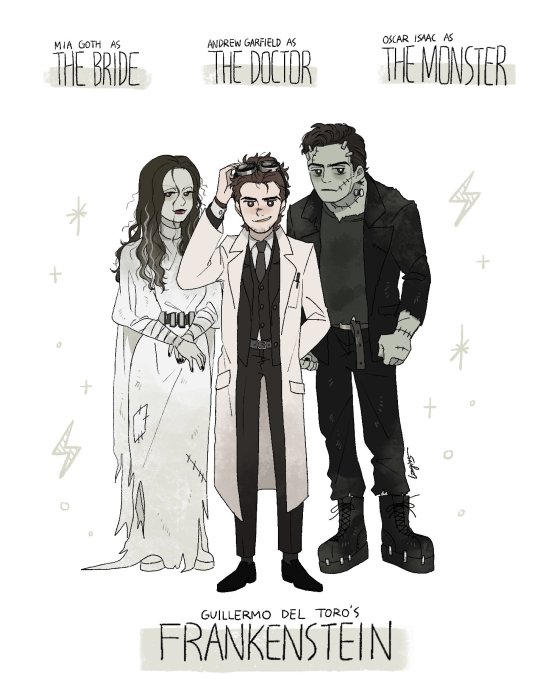
Guillermo del Toro's Frankenstein fan art is so cute!
(source @Lingi15 )
#frankenstein movie#fan art#guillermo del toro#andrew garfield#oscar isaac#mia goth#frankenstein#movies#upcoming projects#peter parker#spider man#the amazing spider man#tasm#tasm peter parker#tasm peter#andrew peter parker#andrew peter#sincericida
78 notes
·
View notes
Text

@spicymangoman this is such a thought provoking question (re: my jeffrey jerome cohen's monster culture (seven theses) post)
i think the shortest answer is that the monster is polysemic; it is a sign with multiple simultaneous interpretations and meanings. ocean vuong writes that a monster is a "hybrid signal"; any contradictions it may hold are, in some way, part and parcel of being a monster.
the monster does often introduce category crisis regarding the difference between self and Other! this is an extremely common monstrous trope:
the hivemind is the most obvious example of a monster that blurs the boundary between self and Other
the blob also comes to mind, as an Other which quite literally threatens to incorporate the self into its body
through the same logic as the blob, we can see this same threat of the self being annihilated and incorporated into the Other through any monster that engages in cannibalism or consumption
(i'm currently researching The Haunting of Hill House and boy howdy is that theme present)
infectious monsters (vampires, zombies, werewolves) pose a similar threat, the Other whose influence may cause a loss of selfhood and subsequent incorporation into a noncontiguous monstrous body
frankenstein's monster and shapeshifters both challenge the stability of the self, or the self as a singular, knowable body, thereby posing a problem for the self/Other binary
we must also keep in mind that the Other represented by the monster is quite often a coded representation for the racialized, gendered, sexed, classed, etc. other. i think that here we find a general anxiety of category crisis with regard to "you look like me but you're not me" and the differences then being exaggerated through the monster's nonbinary and excessive body
so, while the creature from the black lagoon or guillermo del toro's amphibian man do not pose these same threats of losing the self to the monster, they still represent a sort of me/not-me problem through their anthropomorphism alone (while simultaneously standing in for the racialized, "savage" other)
cohen also writes that "one kind of alterity is often written as another", meaning that not only do the metaphors within the monster often overlap, but the monster often troubles multiple binaries at once. he gives the example of the cynocephalus, a human with a dog head and intersex characteristics, thereby sitting at the border of human and beast as well as the border of male and female
regarding category crisis, cohen writes that the monster "defies easy categorization" and continues:
This refusal to participate in the classificatory "order of things" is true of monsters generally: they are disturbing hybrids whose externally incoherent bodies resist attempts to include them in any systematic structuration. And so the monster is dangerous, a form suspended between forms that threatens to smash distinctions.
i would say that the monster's nonbinariness stems, in some ways, from the fear of the unknown, and more specifically the fear of the unknowable. by existing across binaries and disrupting systems of classification, the monster presents a challenge to defining it and knowing it
knowledge is typically the antithesis to fear. Alien and Child's Play both rely on the audience not catching full glimpses of the monster, utilizing a half-seen, in the shadows, out of the corner of your eye aesthetic to maximize fear. the first step to solving a monster of the week episode is mulder or giles defining the monster. the longer the monster challenges knowledge, the longer it remains a threat, a danger, and an object of horror
similarly, the fear of the Other is a fear of the unknown, because the body outside the self can never be wholly, comprehensively, reliably known. in my opinion, this is probably the source of that overlap in the metaphor: the monster embodies category crisis and the dread of difference due to their common roots in the fear of the unknown
23 notes
·
View notes
Text

27 notes
·
View notes
Text
Tom: What’s a “burden”?
Skull: It’s something you must carry even though it hurts you very much.
#incorrect power rangers#source: Guillermo del Toro's Pinocchio#boom! comics power rangers#World of the Coinless#Red Sentry Eugene Skull Skullovitch#Tom Oliver | Clone Tommy Oliver#mmpr#ggpr#Mighty Morphin Comics
3 notes
·
View notes
Text
i really enjoyed the spirit of the beehive (1973), a spanish film made under the franco regime that provided clear inspiration to later mexican filmmaker guillermo del toro. the film is lush and laconic, employing a rich web of symbolism to portray its coded criticism of the fascist regime that only barely allowed it to be released. central to the film, of course, is the image of a beehive, framed as a locus of deadening labor, where bees wear themselves out in an intricate living machine that does not care if they live and has no use for their death. yet within that beehive, there exists not an ever-decreasing fractal of business but instead a void. the film centers around a young girl, who, similar to the protagonist of guillermo del toro’s pan’s labyrinth (2006), finds herself emotionally isolated from her parents by the strain and violence of the spanish civil war, which her parents keenly feel and she can only observe without context. although the film opens with her being fairly connected to her community, attending school and the traveling cinema, the longer the film continues the less others are able or willing to communicate with her, until at last the only mentor figure she dares seek out is her imaginary friend, frankenstein’s monster—a creature she cannot understand why she is expected to hate, just as she cannot understand why she is expected to hate some mushrooms, or the wounded republican soldier who takes shelter in a nearby abandoned farmhouse. her sympathy for the monstrous, even coming from such an innocent and well-meaning source, leaves her frightened for her life and isolated beyond repair. artistically, the film makes beautiful use of match-cuts to link together the disparate images of a film that prefers images to dialogue; the whole thing is a web of unspoken association, mirroring the muting conditions of censorship and trauma that the film is set and produced in. i really enjoyed the spirit of the beehive (1973), which well deserves its shining reputation in the world canon, and i would highly recommend it
37 notes
·
View notes
Text
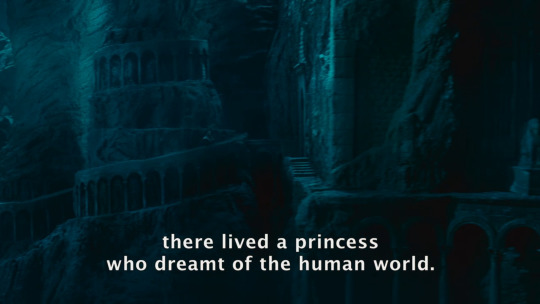

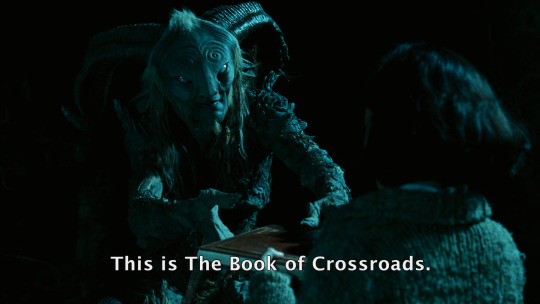
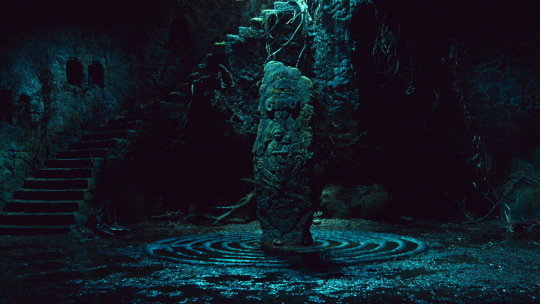



Guillermo Del Toro was inspired by Ico and Shadow of the Colossus when he made El Laberinto del Fauno (Pan's Labyrinth).
It’s well known that Guillermo Del Toro is a huge fan of Ico and Shadow of the Colossus. The second game came out around the time filming of Pan’s Labyrinth was concluding, but I think it’s quite likely that del Toro would have watched trailers for it. His film is often described as a fairy tale for adults, and it occurred to me how well that describes Ico. Shadow of the Colossus is more like a Greek myth.
The first shot of the movie shows Princess Moanna leaving her kingdom through ruins that are very reminiscent of the castle in Ico. Ofelia speaks to the faun in a place with a spiral staircase that's reminiscent of where Yorda is suspended in her cage.
Both we and Ofelia are told that she is in fact Princess Moanna, Moanna's soul having returned in her body. When she finally escapes her fascist captor, she glows like Yorda and is reunited with her family as the princess in an afterlife kingdom.
I wrote a post here about Le Roi et l’Oiseau (The King and the Mockingbird) as a source of inspiration for Fumito Ueda. It's an adaptation of Hans Christian Andersen's The Shepherdess and the Chimney Sweep, which features a faun/satyr, the same creature with the hind legs of a goat and horns (like Ico) that we see in Pan’s Labyrinth.
The ending music, which is also the lullaby that Mercedes hums to Ofelia, sounds a bit like ‘La Bergere et le Ramoneur’ from The King and the Mockingbird which I have previously suggested could be an inspiration for 'Castle in the Mist'.
The Legend of Zelda: Ocarina of Time -
Ofelia is guided by fairies. Two fairies are effectively ‘used up’, saving her from being killed.
The Great Deku tree.
The monster sitting at the table looks like a ReDead and when he places his eyes into his hands, it reminded me of Bongo Bongo, the Shadow Temple boss.
Various movie influences -
A girl rescuing her baby brother in a labyrinth is like Labyrinth.
Doors created by drawing an outline with chalk is from Beetlejuice.
Ofelia wears a pair of red shoes like Dorothy in The Wizard of Oz.
Alice in Wonderland.
Pan's Labyrinth feels very like a video game and as much like a Greek myth as like a fairy tale. It's something I feel I should have thought of before, how much the quests you go on in action-adventure and RPG games are like those in classical mythology.
Think of how Ofelia has to complete three tasks, face three monsters and is rewarded with special items. Her first task, for example, is to get three stones into the mouth of a giant toad for which she is rewarded with a special key.
It's amazing how Guillermo del Toro manages to thread this fantasy world together with a real world situation of Ofelia being held captive by a sadistic military officer in Franco's Spain.
#pan's labyrinth#el laberinto del fauno#guillermo del toro#greek mythology#fairy tale#persephone#ico#shadow of the colossus#fumito ueda#shrine of worship#wander and mono#legend of zelda#ocarina of time#deku tree#shadow temple#labyrinth 1986#beetlejuice#wizard of oz#alice in wonderland#the shepherdess and the chimney sweep#le roi et l'oiseau#the king and the mockingbird#castle in the mist#yorda#princess moanna#hans christian andersen#faun#satyr
20 notes
·
View notes
Text
Putting lore on Pacific Rim together is a wild time because we essentially have the following sources to work with:
The movie, which you would be rather inclined to think of as the Most Reliable Text since it's the main text, but then you realize that you do have to choose between Hermann Gottlieb's halving pattern and Stacker Pentecost's statement about running a dozen missions as a ranger, because they can't both be true.
The Drift Space special feature on the DVD, which sources information on Newt from an outdated character bio.
The Tales From Year Zero and Tales From The Drift comics, which give you insight into the history of this setting as Travis Beacham imagined it, but the art is terrible.
The novelization, which contains some nice little tidbits about Jaeger tech and kaiju biology, and occasionally some insight into the characters' pasts and personalities, but completely butchers the characters' biographies and uses outdated information about the creation process for the kaiju. And the characterization is terrible and the prose is god-awful.
The artbook, which is full of typos in the data boxes and also contains a quote from Travis Beacham with outdated information on the kaiju creation process.
Travis Beacham's blog, where he happily answered questions about drifting, and many other questions that he didn't believe would spoil anything for the PR2 and comics he never got to make. Unfortunately, he believed a lot of things would be spoilers. (This is the man who thought fans would be able to pick up on the sequel hooks for PR2 by the "seventh viewing.") And also, he occasionally just got mixed up.
Travis Beacham's Twitter, where he, y'know, kept on being Travis Beacham.
The character bios posted by Guillermo del Toro on his Twitter account, which are all a few iterations out of date.
News articles containing quotes from interviews with Guillermo del Toro, which occasionally provide some insight but never as much as you'd hope.
The PropstoreAuction website, which has pictures of numerous props and costumes made for the film, some of which were seen in the movie and some weren't; but honestly they're all a joy to look at.
Old galleries of concept art that are still floating around out there... or are only kept alive on the WaybackMachine.
And of course, there's old interviews and BTS videos floating around on YouTube.
And if you want to figure out what the hell is going on, you have to look through it all and carefully compare and contrast everything to figure out what's probably reliable and up-to-date, and what's somebody getting confused or making a typo, or presenting actual info badly, presenting outdated information, or making a last-minute effort to paste over a plot hole (real or imagined).
13 notes
·
View notes
Quote
“I wanted to show that men and women can be friends without having a relationship,”[...] “Theirs is a story about partnership, equality and a strong bond between partners. It’s important for little girls to know not every story has to be a love story and for boys to know that soldiers aren’t the only ones to triumph in war.”
Guillermo del Toro
This about the relationship between main characters Mako and Raleigh (Rinko Kikuchi and Charlie Hunnam) in Pacific Rim. (source) It feels like it is a valuable meassge to send.
71 notes
·
View notes
Quote
Monsters are the patron saints of otherness.
Guillermo del Toro (source: Indiewire)
292 notes
·
View notes